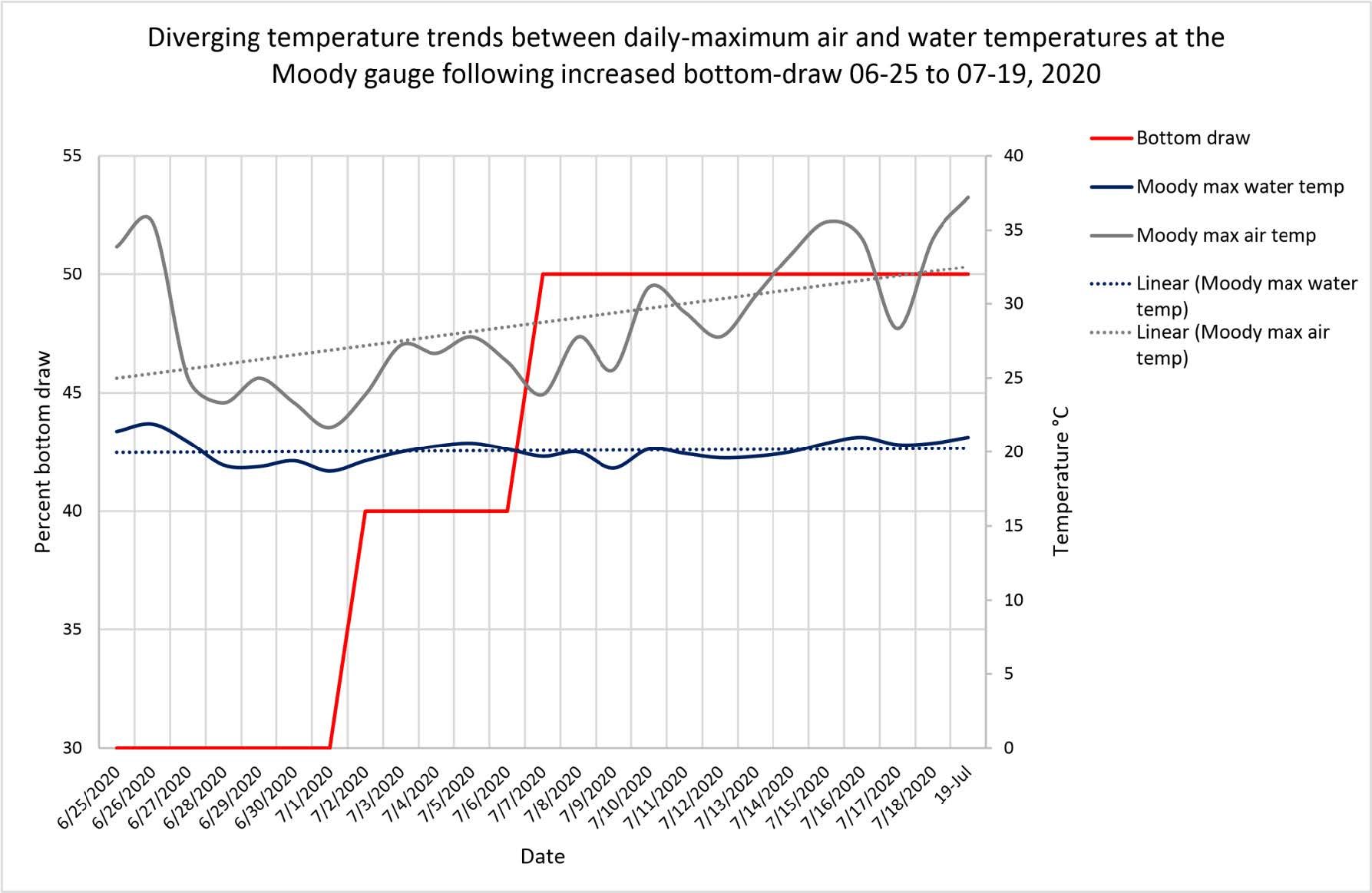Another Summer of DEQ Complacency
July 12, 2021 was an exciting day at the Deschutes River Alliance. After experiencing a record-breaking heat wave and knowing that the lower Deschutes River’s water temperatures were exceeding all reasonable standards for aquatic life, we saw the temperature drop at the Madras gage. Portland General Electric (PGE) opened the bottom gate to allow what it says is the maximum amount of cool, clean water from the bottom of Lake Billy Chinook to flow into the lower Deschutes. A predictable 48 hours later we saw that cool water reach the Moody gage at the mouth of the river and water temperature decreased. A simple act by PGE lowered the temperature the entire 100 miles of river.
I sent PGE a friendly “what’s up?” email inquiring about the change in operations. The response made my heart sink – changes were not made to benefit the river, the fish that call it home or the community whose existence and economy depend on the health of the river. The changes were because of a maintenance issue and there was a plan to return to warming the river soon.
Folks across the region have been desperate for cooler water in their dangerously warm rivers all summer. The Deschutes has previously provided a crucial cold-water refuge for upstream migrating salmonids challenged by dangerously high temperatures in the Columbia. This is settled science and is well documented. That cold water refuge has been largely eliminated in recent years. PGE has the ability to provide this important refuge for the Columbia’s suffering salmon and steelhead, but it refuses to do so without reason. The Oregon Department of Environmental Quality (DEQ) also continues to turn a blind eye and lets PGE carry on.
Temperature violations are on a long list of harms DEQ is allowing PGE to do to the river. Water temperature is one of the best monitored parameters in the river. Data are readily available from both the Madras and Moody gages – the two ends of the lower Deschutes. We have put that data from 2020, along with air temperature, into the graph below that confirms what we maintained all along: when cooler water is released at Madras, water temperature declines at Moody even as air temperatures rise.

For over ten years, DEQ has made backroom deals with PGE – allowing PGE to continue to operate the Pelton Round Butte Project while in clear violation of the original agreement. These violations continue on a daily basis.
Those backroom deals are just one of DEQ’s failures on the lower Deschutes River and elsewhere over the last couple of decades. Across the state over 3,700 segments of rivers require clean-up plans – and DEQ has done next to nothing to create and implement those plans unless forced to via a lawsuit. DEQ has become an agency that fails at its most basic purpose - protecting Oregon’s environment.
If DEQ continues to ignore their legislative and administrative charge, the body that oversees them – the Oregon Environmental Quality Commission (EQC) – needs to intervene with clear direction to do better. The EQC is comprised of five commissioners – two of those seats are currently vacant.
When discussing water quality in the Columbia River, Governor Kate Brown said, “I’m committed to ensuring we have clean water to support a thriving economy and a healthy environment, now and for future generations.” Such statements ring hollow when seen in the context of what’s happening on the Deschutes and other rivers in Oregon, aided and abetted by DEQ. In order for the Governor to keep that commitment for the state of Oregon, she must appoint commissioners who will take difficult positions against large corporations and their continued failure to meet water quality requirements. They need to direct DEQ staff to protect the environment over having cordial relationships with polluters.
Sarah Cloud, Executive Director, Deschutes River Alliance
